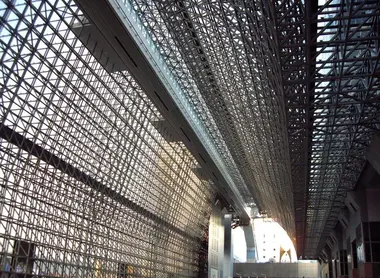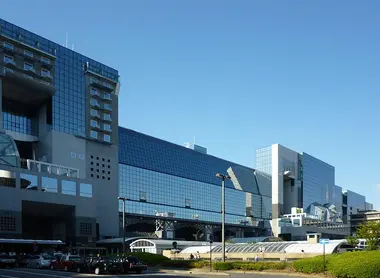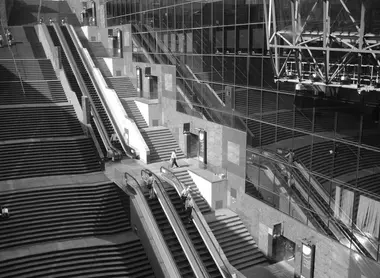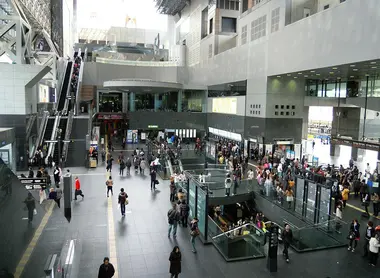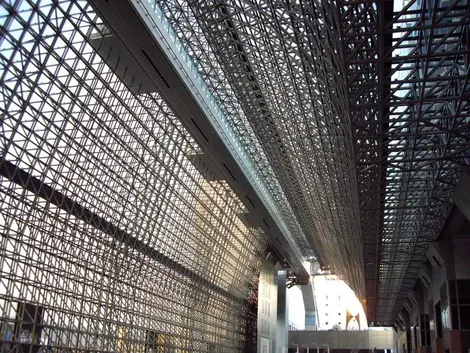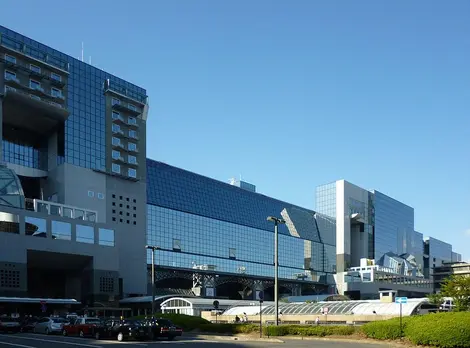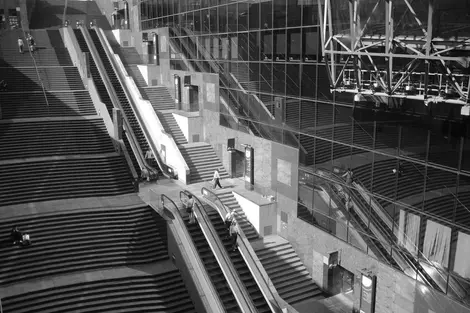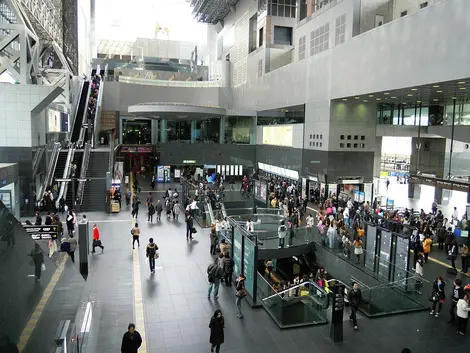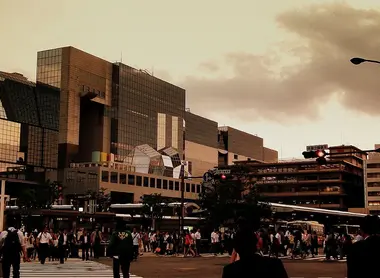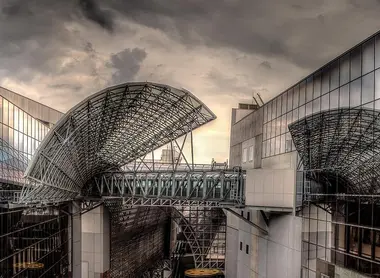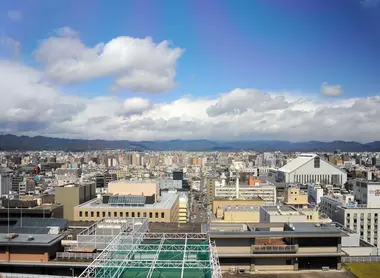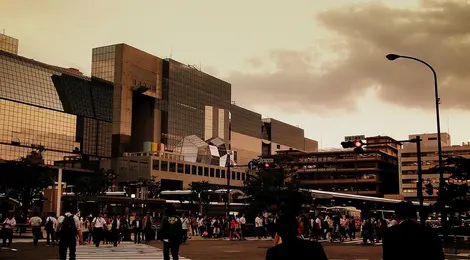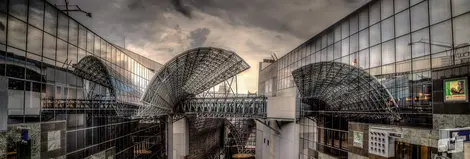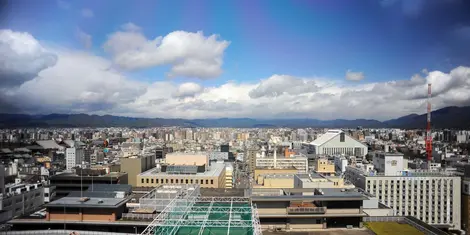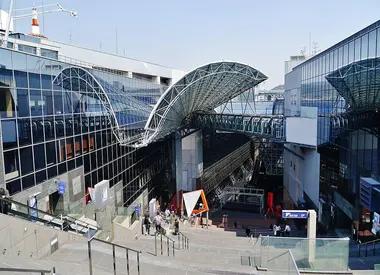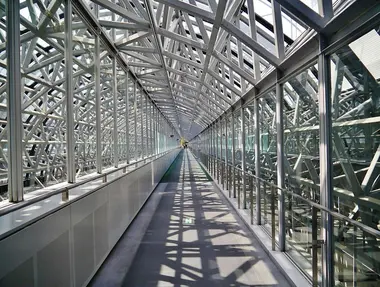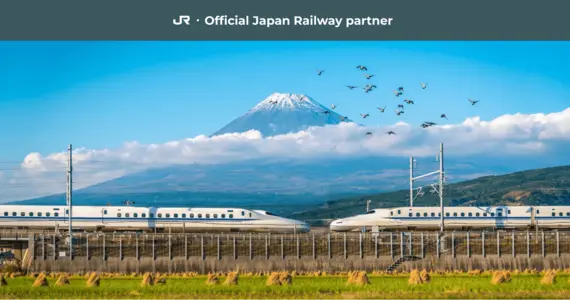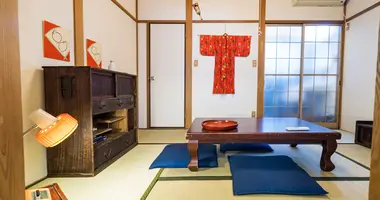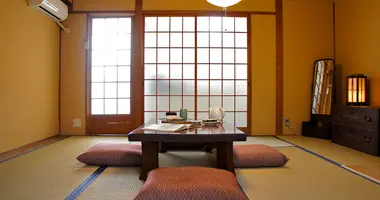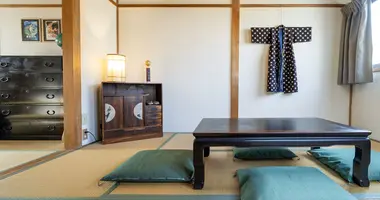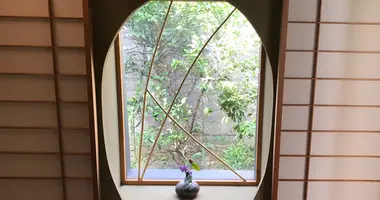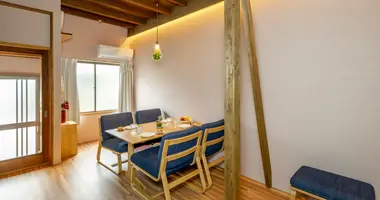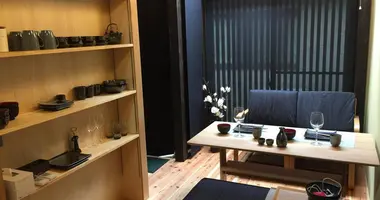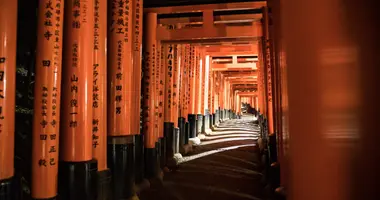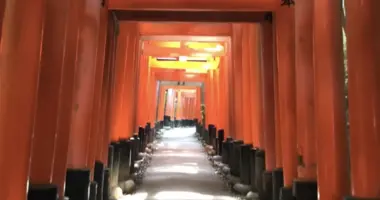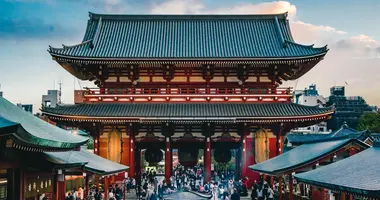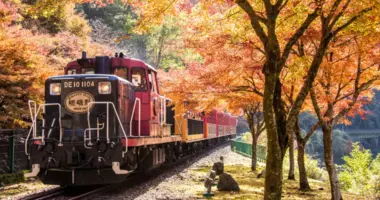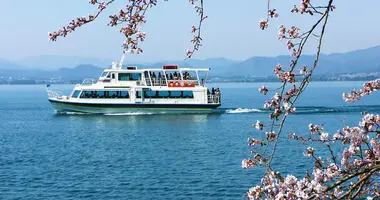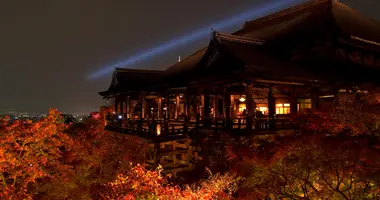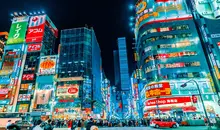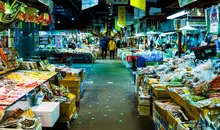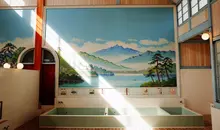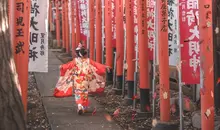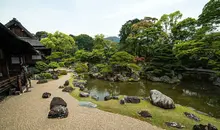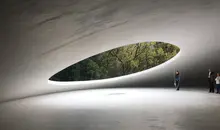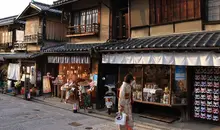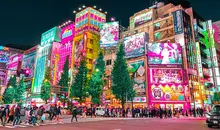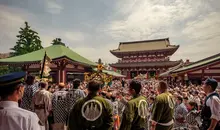Kyoto station: a must for travellers to Japan
- Published on : 11/05/2024
- by : J.L.T.B. / K.C. / J.R.
- Youtube
Kyoto Station is one of Japan's largest and most important railway stations. A veritable transportation hub, it offers easy access to the entire country thanks to the Shinkansen and numerous local train lines. It's also a nerve center for visiting the historic city of Kyoto, with its many services, stores and restaurants making it a destination in its own right.
Located in the heart of the city, Kyoto Station offers quick access to major tourist sites such as Nijo Castle, the Path of Philosophy and the traditional Gion district. But even before you set off to explore the imperial city, the station is well worth a visit to admire its unique architecture and enjoy its many attractions.
Inaugurated in 1997 to mark the 1,200th anniversary of the founding of Kyoto, this futuristic station designed by the famous architect Hiroshi Hara is surprisingly gigantic, with its avant-garde design combining glass and steel. With its 15 floors and 238,000 m², it's one of the country's largest stations!
But more than just a place of transit, Kyoto station is a veritable city within the city. Its floors house a huge shopping mall with over 100 boutiques, dozens of restaurants, a hotel, a theater, a museum and even a hanging garden. Enough to keep you busy on a rainy day or evening in Kyoto.
So before heading off to your next destination, take the time to stroll the station's aisles, shop for souvenirs and contemplate the breathtaking view of Kyoto from its free observatory on the top floor. Kyoto station is a must-see on your trip to Japan!
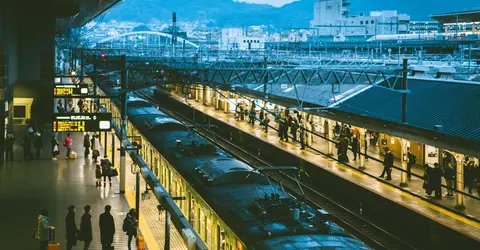
Kyoto station platforms
hans-johnson
Modern, futuristic architecture by Hiroshi Hara
It's impossible not to be impressed when you arrive at Kyoto station! With its 70-metre-high triangular glass façade and immense glass roof, the building is a veritable architectural UFO in the heart of the city. It is the work of Japanese architect Hiroshi Hara, who also designed the Sapporo Art Museum and Osaka's Umeda Sky Building.
Inspired by the art of karakuri, the ingenious mechanisms used in puppet theaters, Hiroshi Hara imagined an airy, transparent structure that makes the most of natural light. Inside, the immense atrium running the full length of the 470-metre station offers a vertiginous perspective.
The architect also scattered numerous nods to Kyoto's traditional architecture, such as the pagoda-shaped roofs and temple-like staircases. On the ground, large empty spaces evoke village squares, while aerial walkways are reminiscent of bridges spanning a valley. A clever way to recreate a miniature city inside the station and lend a warm atmosphere to this immense glass-and-steel complex.Feel free to stroll around all floors to admire the station's architectural prowess. The play of light, the geometric lines and the bold perspectives will amaze you at every step. Kyoto station is a true work of art in its own right!
All of Japan's major lines within easy reach
Kyoto station is an essential rail hub for travel throughout Japan. Served by Shinkansen, JR and private lines, it offers easy access to the country's major cities:
- The Tokaido Shinkansen takes you to Tokyo in 2 hours 15 minutes, Nagoya in 35 minutes and Osaka in just 15 minutes!
- The JR Sagano line takes you to the natural beauty and historic sites of Saga-Arashiyama in 15 min.
- The JR Nara line takes you to the heart of the ancient capital in 45 min.
- The Haruka Express line linksKansai airport directly to Kyoto station in 1h15.
And don't forget the local trains to all the smaller stations in and around Kyoto, as well as the Karasuma subway line, which serves the city center underground.
Whether you're traveling with the Japan Rail Pass National or an individual ticket, Kyoto station is the ideal starting point for discovering Japan's treasures. Don't hesitate to ask for information from ticket offices or station agents, who will direct you to the right platform.
Good to know: Shinkansen and mainline train platforms are located on the 2nd and 3rd floors of the station on the south side (Hachijo). For local trains and the subway, head for the central entrance on the north side (Karasuma).
Finding your way around the huge station
With its 15 floors and hundreds of thousands of passengers a day, it can be easy to get lost in the maze of Kyoto station. But don't panic! There are plenty of tools at your disposal to help you find your way around:
- Large, detailed maps of each floor, with the names of stores, restaurants, ticket offices, platforms and more. Most are translated into English.
- Directional signs hanging from the ceiling throughout the station. Follow the "Central Gate" signs to reach the main entrance on the north side.
- A tourist information center on the 2nd floor with English-speaking staff. Here you can pick up a city map, brochures on places to visit and even book certain activities.
- JR counters for buying train tickets or exchanging your Japan Rail Pass. There are some in the Shinkansen hall on the Hachijo side and in the central entrance.
If you're arriving with luggage, there are several lockers, notably at the main north and south entrances and in the basement near the subway. Luggage racks are also available free of charge throughout the station.
Finally, the station is equipped with a free wifi network (at least in the JR areas). Handy for recharging your itinerary on your smartphone! With all these services, it's impossible to get lost for long in this railway cathedral.
A vast shopping and dining complex
Kyoto station isn't just a place of transit, it's also a huge shopping mall where you can easily spend a whole day! Its 15 floors are packed with stores, restaurants and entertainment of all kinds.
For shopaholics, the Isetan department store occupies 10 floors on the west side. Fashion, accessories, beauty, delicatessen, tableware... There's something for every taste and budget. The 7th floor even houses a small museum with temporary exhibitions.
In all, the station is home to over 100 stores, including a large bookshop, a Pokemon store, several electronics stores and even a pharmacy. If you're looking for local souvenirs, head to Omiyage Street on the 2nd floor of Cube Plaza (east side).
When it comes to eating out, you'll be spoilt for choice with dozens of restaurants, cafés and takeaway food stalls. From breakfast to late dinner, there's something for every taste and budget. Special mention for :
- The Ramen Koji on the 10th floor, an alleyway featuring 9 restaurants specializing in delicious ramen (noodles).
- The ekiben, meal boxes sold in stations. Perfect to take with you on the train, they'll let you discover the region's specialties. You'll find them in the Cube Plaza.
As you can see, you won't go hungry or get bored between trains at Kyoto station. Take the opportunity to take a real gourmet break and fill your suitcases with souvenirs!
Kyoto in the blink of an eye from the station
Last but not least, Kyoto station offers superb panoramic views of the city! Head to the 15th floor to enjoy a free observation deck 45 meters above ground. The view of Kyoto and the surrounding mountains is well worth the detour, especially at sunset.
For another spectacular view, take the Skyway, a glass walkway suspended above the central hall. You'll be thrilled and amazed by the view over the station!
Want to go further? Exit on the Karasuma side and you'll come face to face with the Kyoto Tower. At a height of 100 meters, it offers a breathtaking 360° view of the entire city. Admission costs 770 yen.
If you prefer a walk in the fresh air, there are several sites of interest within walking distance of the station. Temple Toji (World Heritage Site) is 15 minutes to the south, and Shoseien Garden 10 minutes to the east.
Last but not least, the station is surrounded by bus and cab stops that will take you to Kyoto's main districts in the blink of an eye. Ask at the information center for a map of the bus routes, most of which serve the city center in less than 20 min. All the treasures of the ancient capital are within easy reach!
Where to stay near Kyoto station?
Do you have an early morning train to catch, or are you arriving late at night? Sleeping near Kyoto station will save you precious time. The area is full of quality hotels to suit all budgets.
The most convenient is the Hotel Granvia, directly connected to the station. You can reach your room without even leaving the building! This modern hotel offers comfortable, well-equipped rooms from 20,000 yen per night. The upper floors offer splendid views of the city.
Opposite the station on the south side, Hotel Hachijoguchi is a great value for money. Rooms may be a little small, but the location is ideal for a short stay. Expect to pay around 10,000 yen per night.
If you prefer the traditional atmosphere of a ryokan, you'll find what you're looking for at Ryokan Hakuun-An, tucked away in a small alley 5 minutes' walk from the station. Tatami, public baths, kaiseki... A true immersion in traditional Japan from 15,000 yen.
Other addresses to suit all tastes and budgets can be found in the surrounding streets. One thing's for sure: if you sleep near the station, you'll be right in the heart of the action, so you can make the most of your stay in Kyoto!
